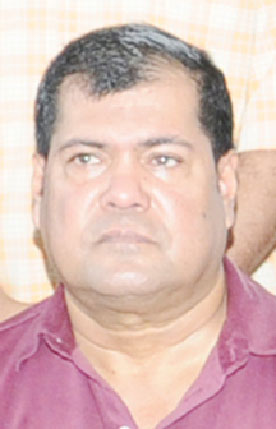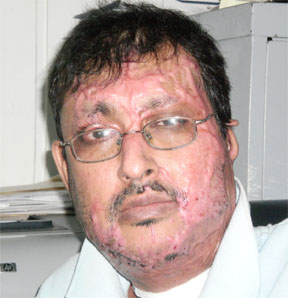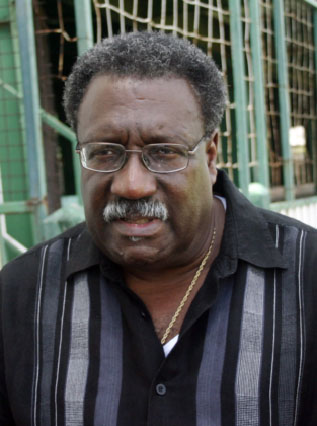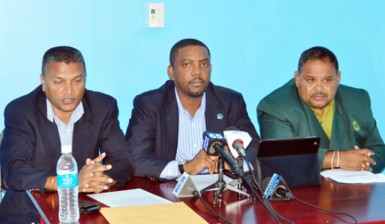Two years ago (2011) at the Marylebone Cricket Club (MCC) Spirit of Cricket lecture in London stalwart Sri Lanka player Kumar Sangakkara received a standing ovation for his speech where among other things he spoke of the long standing corruption of cricket in his homeland and of the role of politics in cricket.
According to Sangakkara in his speech, cricket in Sri Lanka could not be sustained without state funding unlike what happens here.

Sangakkara also said that unlike what happens here the Minister of Sport has final say in matters of team selection. The Minister of Sport also has the unique power of being able to dissolve the cricket board if investigations reveal corruption or financial impropriety.
Simultaneously right here in Guyana, some of the practices that Sangakkara condemned were being perpetuated by cricket executives in this country.
Guyana, a country with a proud cricket legacy is now in full-fledged turmoil.
Not since the infamous crowd riots in 1979 and 1999 in the presence of visiting Australian teams, along with the abandoned 1981 Windies versus England second test match, has Guyana’s cricket been under such a microscope for its off-field activities.
Last year, the watchdog corruption body Transparency International, ranked Guyana as the most corrupt English-speaking Caribbean country, and though expectedly, the report has been vehemently challenged by Government, it nevertheless conveyed the manner in which the modus operandi of the those in authority including sports administrators in general and cricket administrators in particular are being viewed worldwide.
One view being expressed in many circles within Guyana is that the government’s administrative style, filtered down into the country’s most significant sporting governing body, the Guyana Cricket Board.
Chetram Singh had been president of the GCB for around 19 years and when he announced that he was no longer willing to continue in the position; all hell broke loose as key players jockeyed for pole position to be the next president of the GCB.
It led to one of the most shocking and horrific event in the history of sport in Guyana probably being second only to the killing of Tommy Orderson, a former banking executive and executive member of the then Georgetown Football League.
In a tale that highlighted of personal violence, then GCB Assistant Treasurer, Pretipaul Jaigobin’s face was burnt with acid by an unknown individual allegedly after he had revealed major discrepancies in the board’s accounts. Jaigobin was also alleged to have uncovered a scheme, whereby applications for United States and Canada visas were gained by persons purporting that they were cricketers when they were not.
Two fraudulent elections have been conducted in which there was a media blackout and the Berbice County which produced notable players such as Rohan Kanhai, Basil Butcher, Alvin Kallicharan, Roy Fredericks and Joe Solomon did not participate.
WICB/ICC STANCE

While all of these shenanigans were being perpetuated, the WICB from the beginning of this unedifying soap opera did not acknowledge the Guyana government implemented Interim Management Committee (IMC), which was headed by “Super Cat” Lloyd himself.
The International Cricket Council (ICC) followed with its condemnation of the intervention of Guyana government.
This is where the intransigent positions from both governing bodies – has been highly spurious at best.
The major faux pas by the WICB in 2013 alone has seen them inexplicably calling the January GCB elections legal thereby allowing domestic cricket and potentially the test match versus Pakistan in July 2013 to return to Guyana in the present climate. This has led many to suspect that the reasons for this bewildering decision is directly related to the belief that both the former WICB President Julian Hunte and new president Dave Cameron needed the Guyana votes at the WICB election on March 27.
Thus they have possibly quite cynically allowed the appalling situation in Guyana to continue to be perpetuated just for their electoral benefit whilst inadvertently violating Guyana’s court laws in the process.
Suspicion was basically re-affirmed when Cameron on his first official presidential visit to Guyana announced the WICB’s continued support of the GCB.
Surely president Cameron isn’t that naïve to believe the dissenting groups of Berbice, Georgetown and East Coast are going to just adhere to his empty rhetoric and pleading for peace and rally around the GCB?

The ICC’s opposition to Guyana’s IMC as aforementioned is perplexing given what has transpired in Sri Lanka where it must be noted they have overseen the activities of the Sri Lanka cricket board, which has had a revolving door of IMCs for the last decade.
Despite this, the ICC has made moves of course to deal with this global problem with new ICC president Alan Isaac saying that…”a review of the stance against government intervention is being considered.”
Solving to the problem
In January a two-year long squabble between the Guyana Football Federation and the Georgetown Football Association (GFA) was sorted by FIFA in a two-hour meeting.
FIFA and CONCACAF sent representatives Guyana to sit down with all dissenting groups and this singular action brought an end to this saga and produced fair elections.
FIFA’s stance against government intervention in sports has a more effective clout, given its consistent historical record of banning teams worldwide for not adhering to this ruling.
The ICC and WICB needs to follow this archetype. ICC representatives need to accompany WICB officials to Guyana, sit down with all parties, hear the grievances and make a final decision because, as things stand, those dissenting groups feel that the WICB has not taken into account their concerns adequately.
Such an approach is the only way to solve the Guyana cricket debacle – or else the cutting of the Gordian knot will become even more impossible.






